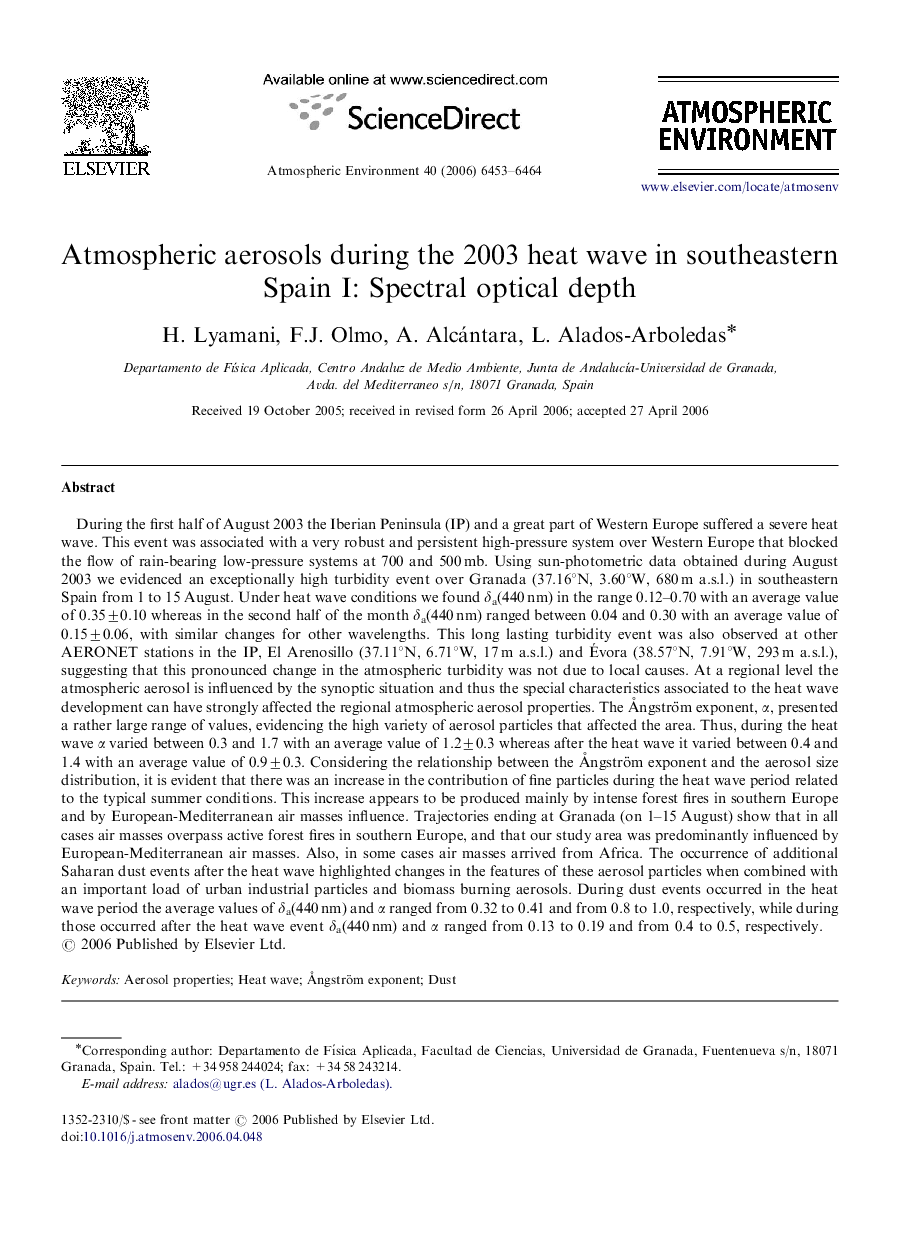| کد مقاله | کد نشریه | سال انتشار | مقاله انگلیسی | نسخه تمام متن |
|---|---|---|---|---|
| 4443835 | 1311211 | 2006 | 12 صفحه PDF | دانلود رایگان |

During the first half of August 2003 the Iberian Peninsula (IP) and a great part of Western Europe suffered a severe heat wave. This event was associated with a very robust and persistent high-pressure system over Western Europe that blocked the flow of rain-bearing low-pressure systems at 700 and 500 mb. Using sun-photometric data obtained during August 2003 we evidenced an exceptionally high turbidity event over Granada (37.16°N, 3.60°W, 680 m a.s.l.) in southeastern Spain from 1 to 15 August. Under heat wave conditions we found δa(440 nm) in the range 0.12–0.70 with an average value of 0.35±0.10 whereas in the second half of the month δa(440 nm) ranged between 0.04 and 0.30 with an average value of 0.15±0.06, with similar changes for other wavelengths. This long lasting turbidity event was also observed at other AERONET stations in the IP, El Arenosillo (37.11°N, 6.71°W, 17 m a.s.l.) and Évora (38.57°N, 7.91°W, 293 m a.s.l.), suggesting that this pronounced change in the atmospheric turbidity was not due to local causes. At a regional level the atmospheric aerosol is influenced by the synoptic situation and thus the special characteristics associated to the heat wave development can have strongly affected the regional atmospheric aerosol properties. The Ångström exponent, α, presented a rather large range of values, evidencing the high variety of aerosol particles that affected the area. Thus, during the heat wave α varied between 0.3 and 1.7 with an average value of 1.2±0.3 whereas after the heat wave it varied between 0.4 and 1.4 with an average value of 0.9±0.3. Considering the relationship between the Ångström exponent and the aerosol size distribution, it is evident that there was an increase in the contribution of fine particles during the heat wave period related to the typical summer conditions. This increase appears to be produced mainly by intense forest fires in southern Europe and by European-Mediterranean air masses influence. Trajectories ending at Granada (on 1–15 August) show that in all cases air masses overpass active forest fires in southern Europe, and that our study area was predominantly influenced by European-Mediterranean air masses. Also, in some cases air masses arrived from Africa. The occurrence of additional Saharan dust events after the heat wave highlighted changes in the features of these aerosol particles when combined with an important load of urban industrial particles and biomass burning aerosols. During dust events occurred in the heat wave period the average values of δa(440 nm) and α ranged from 0.32 to 0.41 and from 0.8 to 1.0, respectively, while during those occurred after the heat wave event δa(440 nm) and α ranged from 0.13 to 0.19 and from 0.4 to 0.5, respectively.
Journal: Atmospheric Environment - Volume 40, Issue 33, October 2006, Pages 6453–6464